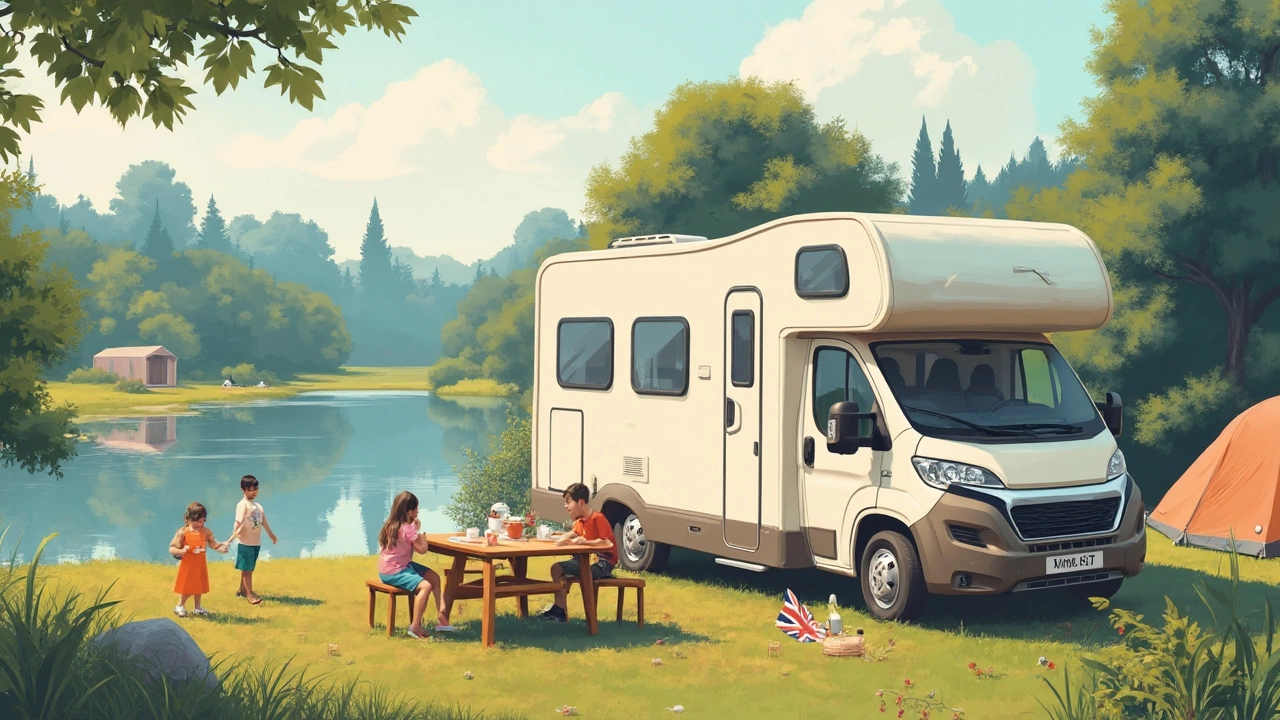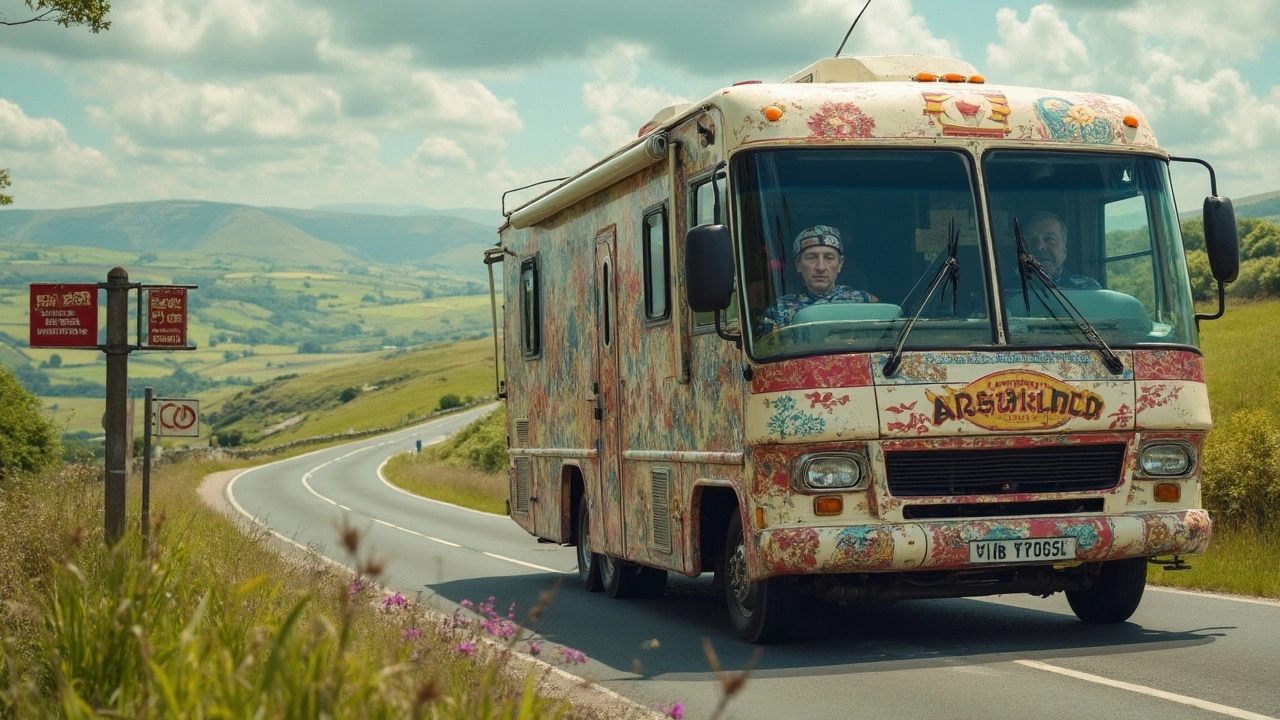If you're dreaming of hitting the road with a motorhome, one big question might be on your mind: can you drive it with just a standard car license? In the USA, the answer is typically yes, but with some really important caveats. Most states allow drivers with a valid car license—often a Class C license—to operate motorhomes as long as they don't exceed certain weight and size limits.
Generally, motorhomes up to 26,000 pounds gross vehicle weight (GVW) are fair game. Size-wise, lengths vary but are often capped around 40 feet, depending on the state. This means many Class B and C motorhomes will be fine, but those luxurious, bus-like Class A vehicles might be pushing it. It's crucial to double-check the specifics with your local DMV, because every state marches to the beat of its own regulatory drum.
- Understanding License Restrictions
- Weight and Size Limits
- Tips for Driving Large Motorhomes
- Legal Considerations and Safety
Understanding License Restrictions
Driving a motorhome can feel like navigating the open seas on a land-bound ship. But before you set off on this grand adventure, it’s crucial to know if your standard car license is up to the task. In the USA, a Class C license is the norm for everyday driving, covering most conventional vehicles. When we talk about what size motorhome you can legally drive with this license, things get interesting.
Weight and Class Restrictions
Most states allow you to drive a motorhome up to 26,000 pounds with a standard license. This weight is known as the Gross Vehicle Weight Rating (GVWR). If you’re looking at the plush, bus-like Class A motorhomes, you’re approaching the upper limit. Class B and Class C motorhomes generally fall below this threshold, so they’re usually a safer bet for those without a commercial or specialized license.
Interestingly, a few states have their peculiar quirks. Some places allow motorhomes under 40 feet in length to be driven with a car license. Others impose restrictions based on the weight distributed over the axles. It's these little details that can trip you up if you're not careful, so always check the specific laws in your state.
State-Specific Nuances
Every state in the USA has its driving rules, and motorhome licensing is no exception. For instance, in California, you're good to go with a motorhome under 40 feet with a standard license. Texas, however, might nudge you towards getting a special non-commercial Class A or B license for certain bigger rigs.
Here’s a quick look at some state specifics:
| State | Length Limit | Weight Limit |
|---|---|---|
| California | 40 feet | 26,000 lbs |
| Florida | 45 feet | 26,000 lbs |
| Texas | Varies | Varies. Some need special license |
How To Ensure Compliance
Before you buy or rent a motorhome, do a quick check of the vehicle's GVWR. This number is easily found on the manufacturer's label, usually inside the driver's door. Keep a lookout for any changes in state laws if you plan to travel cross-country. It's usually wise to confirm your own state’s regulations and perhaps even consider taking a short course on handling larger vehicles. It might earn you some useful tips and bolster your confidence.
With the right knowledge and preparation, you can enjoy the freedom of the open road without worrying about getting flagged down for a driving violation. After all, nothing spoils a road trip faster than legal troubles.
Weight and Size Limits
When it comes to driving a motorhome with a standard car license, knowing the weight and size limits is vital. Most of the time, we're talking about motorhomes tipping the scales up to 26,000 pounds GVW. Why 26,000 pounds? That's the magic number where licensing requirements typically change and might need you to level up to a commercial or a special license.
Motorhome hire companies often provide guidance on this, but it's always smart to know the basics as a driver. Let's break it down:
Common Size Limits
- Length: Usually capped at about 40 feet for a motorhome you can drive on a standard car license. This size easily covers many Class B and Class C motorhomes.
- Height: Most states give you a ceiling of around 13.5 feet. It pays to check your state's specifics if your profile leans taller.
- Width: Restricted to 8.5 feet. This ensures that your motorhome can comfortably share roads with other vehicles.
Don’t Ignore the Hitch
Things can get tricky once you add trailers. When towing, you'll want to make sure the total weight still stays under the 26,000-pound mark.
Example by State
Did you know California allows up to 40 feet of length on non-commercial licenses, while in some other states, it’s a bit shorter? Knowing the specific rules for your area can save you a lot of hassle.
So, as you're planning your next epic road trip, remember to factor in these details. Once you're clear on your weight and size, you're all set to explore the open road with your motorhome hire!

Tips for Driving Large Motorhomes
Piloting a large motorhome can feel like moving a tiny house on wheels. Getting comfortable with the size and weight is key, especially when you're operating under the limits of a standard car license. Here are some handy tips to make your journey smoother.
Practice Makes Perfect
Before you hit the highway, spend some time getting familiar with your rig. Try maneuvering in an empty parking lot to get a feel for turns and reversing. Remember, your motorhome is much bigger than a regular car!
Watch Your Blind Spots
Motorhomes come with larger blind spots compared to standard cars. Adjust your mirrors correctly and consider adding blind-spot cameras if they're not pre-installed. It can make a huge difference when changing lanes or merging.
Mind the Height and Weight
Low bridges, underpasses, and narrow roads can be trouble spots. Always know the height of your motorhome and look out for clearance signs. Additionally, avoid overloading, as exceeding the GVW can be more than just illegal—it impacts handling and braking.
Plan Your Stops
Rest stops matter! Motorhomes require more space, so look for RV-friendly parking areas on your route. Apps like RV Parky help you plan stops along the way.
Take It Slow
A motorhome doesn’t handle like a sports car. Maintain a steady pace and allow for longer stopping distances. If you're new to driving a rig, keeping speed to a minimum around turns is a smart choice.
Defensive Driving
Because of the size difference, there’s a whole different dynamic on the road. Be aware of smaller vehicles around you and anticipate their moves. It’s better to be cautious and let the impatient drivers pass.
By keeping these tips in mind, you can navigate your motorhome hire adventure safely and enjoyably. Remember, practice and patience are your best friends on the road!
Legal Considerations and Safety
Venturing out with a large motorhome brings its own set of legal and safety considerations. While your standard car license might cover you, understanding the specific rules of the road is crucial for a smooth journey.
Know Your State Laws
Every state in the U.S. has its own take on what you can drive with a car license. Some states might require additional endorsements for motorhomes over certain sizes, even if you're under that 26,000-pound limit. Make it a priority to check with the local Department of Motor Vehicles (DMV) to get the latest on what's allowed.
Weight and Load Limits
Even if you're technically allowed to drive that monster of a motorhome, be mindful of weight limits. Overloading can lead to fines, not to mention increased risks when driving. If you plan on bringing lots of gear, make sure you calculate the total weight, including passengers, to stay on the safe side.
Insurance and Liability
Driving a motorhome isn't like driving a regular car, and insurance is something you don't want to skimp on. Make sure your policy covers potential damages specific to motorhomes. A quick call to your insurance agent can clarify what's covered and what's not.
- Check Coverage: Ensure your policy covers breakdowns and travel disruptions.
- Additional Riders: Consider adding roadside assistance for peace of mind.
Safety on the Road
Let's talk safety tips. First, always know the height of your motorhome. Low bridges and drive-throughs aren't your friends. Also, remember that braking distances increase with the size of your vehicle. You'll need more space to come to a stop safely. Driving practice in a less crowded area can do wonders for building confidence.
Stay Informed with Stats
| State | Height Restrictions (Feet) |
|---|---|
| California | 13' 6" |
| New Jersey | 13' 0" |
| Florida | 13' 6" |
Understanding these considerations will not only keep you legal but also ensure your journey is as safe as it is fun.
